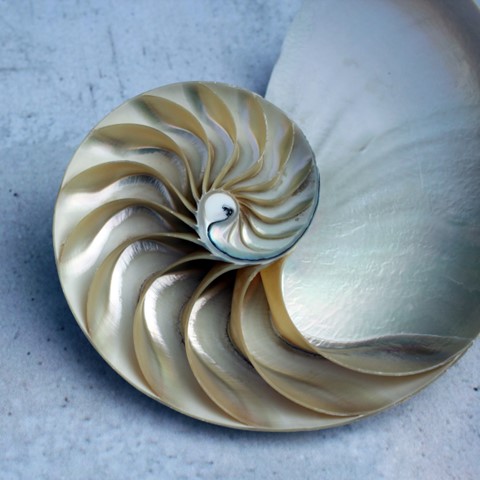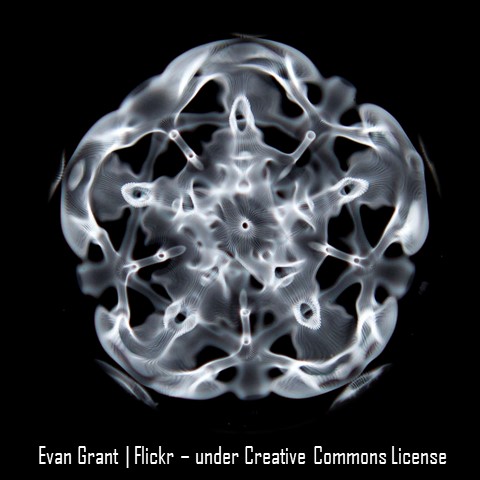
Holographic Universe and Quantum Entanglement
Holographic Universe and Quantum Entanglement
Michael Talbot discusses the holographic model and the "implicate order" model of quantum physics. He proposes that these two models combined explain many unsolved mysteries in both brain functioning (such as memory and vision) and quantum physics (such as the problem of hidden variables and quantum interconnectedness).
Quantum entanglement is a physical phenomenon that occurs when pairs (or groups) of particles are generated or interact in ways such that the quantum state of each member must subsequently be described relative to the other. It is one of the concepts that led Albert Einstein to dislike the theory of Quantum Mechanics. Along with his co-workers, Boris Podolsky and Nathan Rosen, Einstein used entanglement to try to show weaknesses in quantum mechanics. Einstein called entanglement "spooky action at a distance". He said this because he did not believe that quantum particles could affect one another faster than the speed of light. He tried to show that this weird effect means that quantum mechanics gives an incomplete picture of what really goes on and that in the future it will be taken care of with extra "hidden" variables. Erwin Schrödinger talked about entanglement in the same article where he described Schrödinger's cat.
Years later, John Bell showed with his theorem that we can tell if this "spooky action at a distance" is real or not. After that, experiments using Bell's theorem proved that entanglement actually happens between tiny particles.
Michael Talbot is author of Mysticism and the New Physics, Beyond the Quantum, Your Past Lives and The Holographic Universe. He also authored four novels. This program was taped approximately six months before his untimely death in May 1992.
NOTE: This is part of full broadcast of the Thinking Allowed interview (https://www.youtube.com/watch?v=6rgYz_BU2Ew). It was continued in-studio with an additional 58-minute discussion (http://www.youtube.com/watch?v=8-r3pW-G5BI) which is available on our 86-minute DVD.
https://arsmagine.com/others/
Disclaimer: No copyright infringement is intended. I don't own these characters. This is not meant to violate the legal rights, nor any other licensee. This video is for creative and philosophic purposes only.

Quantum Entanglement and the Holographic Principle
Quantum Entanglement and the Holographic Principle
![Mind-Blowing Facts About Our Reality [4K] | The Secrets of Quantum Physics | Spark](https://i.ytimg.com/vi/K5Po5R-1rgY/sddefault.jpg)
Mind-Blowing Facts About Our Reality [4K] | The Secrets of Quantum Physics | Spark
Mind-Blowing Facts About Our Reality [4K] | The Secrets of Quantum Physics | Spark
Professor Jim Al-Khalili traces the story of arguably the most important, accurate and yet perplexing scientific theory ever: quantum physics.
The story of quantum physics starts at the beginning of the 20th century with scientists trying to better understand how light bulbs work. This simple question soon led scientists deep into the hidden workings of matter, into the sub-atomic building blocks of the world around us. Here they discovered phenomena unlike any encountered before - a realm where things can be in many places at once, where chance and probability call the shots and where reality appears to only truly exist when we observe it.
---
Subscribe to Spark for more amazing science, tech & engineering videos: https://goo.gl/LIrlur 🚀
Join the Spark Channel Membership to get access to perks:
https://www.youtube.com/channel/UCMV3aTOwUtG5vwfH9_rzb2w/join
Find us on:
Facebook: https://www.facebook.com/SparkDocs/
Instagram: https://www.instagram.com/spark_channel/
Any queries, please contact us at: owned-enquiries@littledotstudios.com
#Spark #physics

The Mind Bending Story Of Quantum Physics (Part 1/2) | Spark
The Mind Bending Story Of Quantum Physics (Part 1/2) | Spark
Professor Jim Al-Khalili traces the story of arguably the most important, accurate and yet perplexing scientific theory ever: quantum physics.
The story of quantum physics starts at the beginning of the 20th century with scientists trying to better understand how light bulbs work. This simple question soon led scientists deep into the hidden workings of matter, into the sub-atomic building blocks of the world around us. Here they discovered phenomena unlike any encountered before - a realm where things can be in many places at once, where chance and probability call the shots and where reality appears to only truly exist when we observe it.
Albert Einstein hated the idea that nature, at its most fundamental level, is governed by chance. Jim reveals how in the 1930's, Einstein thought he'd found a fatal flaw in quantum physics. This was not taken seriously until it was tested in the 1960s. Professor Al-Khalili repeats this critical experiment, posing the question does reality really exist, or do we conjure it into existence by the act of observation?
Elsewhere, we explore how the most famous law of quantum physics – The Uncertainty Principle – is obeyed by plants and trees as they capture sunlight during the vital process of photosynthesis. Could quantum mechanics explain the greatest mystery in biology - evolution?
Content Provided By TVF International. Any Queries Please Contact Us at hello@littledotstudios.com
Subscribe to Spark for more amazing science, tech and engineering videos - https://goo.gl/LIrlur
Follow us on Facebook: https://www.facebook.com/SparkDocs/
Follow us on Instagram: https://www.instagram.com/spark_channel/?hl=undefined
#JimAl-Khalili #quantumphysics #Astrophysics #science #technology #engineering #matter #mysteriesoflife #quantummechanics #universe

Does Our Reality Actually Exist? | Exploring The World Of Quantum Physics (Part 2 of 2) | Spark
Does Our Reality Actually Exist? | Exploring The World Of Quantum Physics (Part 2 of 2) | Spark
Professor Jim Al-Khalili traces the story of arguably the most important, accurate and yet perplexing scientific theory ever: quantum physics.
The story of quantum physics starts at the beginning of the 20th century with scientists trying to better understand how light bulbs work. This simple question soon led scientists deep into the hidden workings of matter, into the sub-atomic building blocks of the world around us. Here they discovered phenomena unlike any encountered before - a realm where things can be in many places at once, where chance and probability call the shots and where reality appears to only truly exist when we observe it.
Albert Einstein hated the idea that nature, at its most fundamental level, is governed by chance. Jim reveals how in the 1930's, Einstein thought he'd found a fatal flaw in quantum physics. This was not taken seriously until it was tested in the 1960s. Professor Al-Khalili repeats this critical experiment, posing the question does reality really exist, or do we conjure it into existence by the act of observation?
Elsewhere, we explore how the most famous law of quantum physics – The Uncertainty Principle – is obeyed by plants and trees as they capture sunlight during the vital process of photosynthesis. Could quantum mechanics explain the greatest mystery in biology - evolution?
Content Provided By TVF International. Any Queries Please Contact Us at hello@littledotstudios.com
Subscribe to Spark for more amazing science, tech and engineering videos - https://goo.gl/LIrlur
Follow us on Facebook: https://www.facebook.com/SparkDocs/
Follow us on Instagram: https://www.instagram.com/spark_channel/?hl=undefined
#Quantumphysics #life #subatomicparticles #engineering #science #technology #JimAl-Khalili #experiment #originoflife

Quantum Entanglement: The Phenomenon That Defies All Logic | Secrets Of Quantum Physics | Progress
Quantum Entanglement: The Phenomenon That Defies All Logic | Secrets Of Quantum Physics | Progress
Professor Jim Al-Khalili traces the story of arguably the most important, accurate and yet perplexing scientific theory ever: quantum physics.
The story of quantum physics starts at the beginning of the 20th century with scientists trying to better understand how light bulbs work. This simple question soon led scientists deep into the hidden workings of matter, into the sub-atomic building blocks of the world around us. Here they discovered phenomena unlike any encountered before - a realm where things can be in many places at once, where chance and probability call the shots and where reality appears to only truly exist when we observe it.
Albert Einstein hated the idea that nature, at its most fundamental level, is governed by chance. Jim reveals how in the 1930's, Einstein thought he'd found a fatal flaw in quantum physics. This was not taken seriously until it was tested in the 1960s. Professor Al-Khalili repeats this critical experiment, posing the question does reality really exist, or do we conjure it into existence by the act of observation?
Elsewhere, we explore how the most famous law of quantum physics – The Uncertainty Principle – is obeyed by plants and trees as they capture sunlight during the vital process of photosynthesis. Could quantum mechanics explain the greatest mystery in biology - evolution?
Welcome to Progress -- the home of history's greatest leaps forward. From the seismic invention of the world's first printing press to the great rocket-powered marvels that took us to the stars, we'll be bringing you world-class documentaries celebrating history's greatest inventions and technological breakthroughs.
Progress is part of the History Hit Network.
Our inner experiences are the results of the quantum attention functions. The universe is an ocean of quantum attention functions. We also can have direct access to the experiences of others just by focusing our attention functions.”
– Amit Ray


This project is NON-profit
All earnings via links are going to their respective owners. If you need to add an affiliate link to your product (which is listed on any of our pages), send Admin a message.
Thank you






